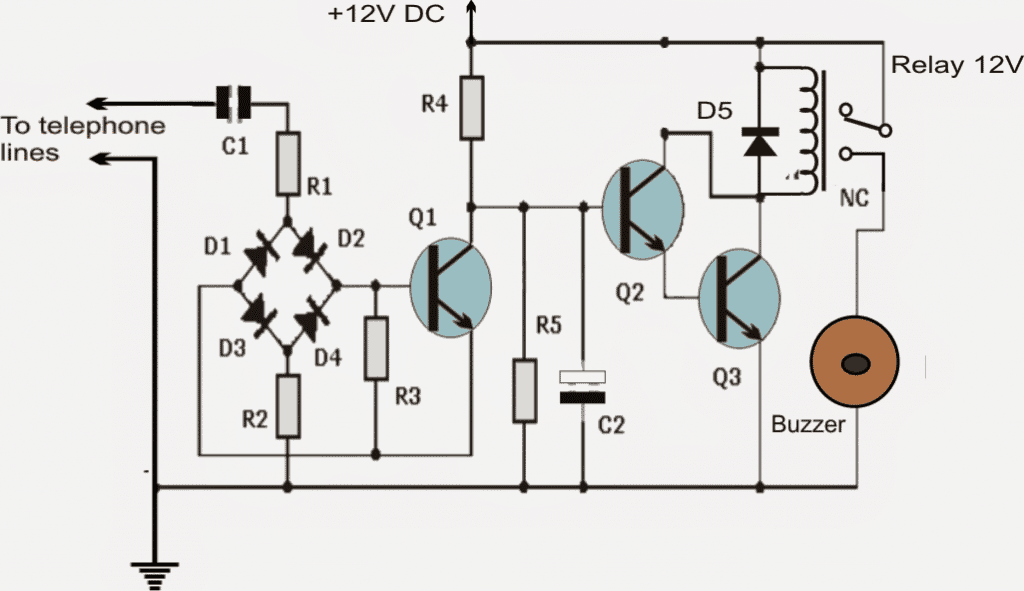The discussed phone repeater circuit can extend the range of your land line ring sound from the phone such that one is able to make a call heard in another room or even in another house.
By: R.K. Singh
Circuit Operation
The circuit can be connected with an attached buzzer, the buzzer with a driving circuit is then further used to expand the range of it. Even a warning light (a light bulb / bulb for example) when be connected in case a person with hearing impairment was to use the device. To achieve multiple units one may connect more than relay output contacts for the respective loads.
How the phone repeater works:
The signal is derived directly from the telephone lines. The current from the lines passes through a set of capacitor C1 and resistors R1, R2, R3 and a rectifier bridge formed by diodes D1, D2, D3, D4. Thus a filtered DC signal is achieved which is then applied to the base of transistor Q1 in the form of a positive pulse signal.
The transistor Q1 responds to the rhythmic pattern of the signal received at its base, resulting in an inverted and amplified signal across its collector resistor.
This amplified collector signal is restricted by the set of resistor R5 and capacitor C2 network making sure that the signal is not pulsed rather direct and straight.
This modified DC is then applied to the set of Q2 and Q3 transistors connected in Darlington configuration for further amplification so that the final output is able to actuate the relay to activate the buzzer. D5 is used to protect transistors Q2 and Q3 for reverse relay coil back EMFs.
Circuit Diagram


List of components for the proposed Telephone repeater circuit
- 2 transistors Q1, Q2: BC547B
- One transistor: Q3: BC337
- Five diodes D1, D2, D3, D4, D5 1N4148
- One capacitor C1: 0.033uF
- 1 electrolytic capacitor: C2: 1uF, 50V
- Two resistors R1, R2: 100K
- 1 resistor R3: 8.2K
- 1 resistor: R4: 180K
- 1 resistor: R5: 39K
- 1 relay (relay) 12V
- 1 12V loud buzzer
Caution: Do not reverse the polarity of the telephone wires to the repeater.
Good evening,
I have been following you for a long time and I especially appreciate your activity, which opened my appetite for electronics, but especially for multiples and extremely useful applications even for self-taught beginners like me.
But, related to the circuit described above, it reminded me that I have several electronic landlines, from which I would like to use parts of the assemblies (keyboard, amplifier, bell, etc.); can you help me with schemes of such devices?
Thanks
Hi, sure, I can help you with common electronic circuits which can be built using common spare parts from electronic devices like telephones etc. If you can tell me which parts you have gathered I will try to figure out which small circuits could be built using those parts.